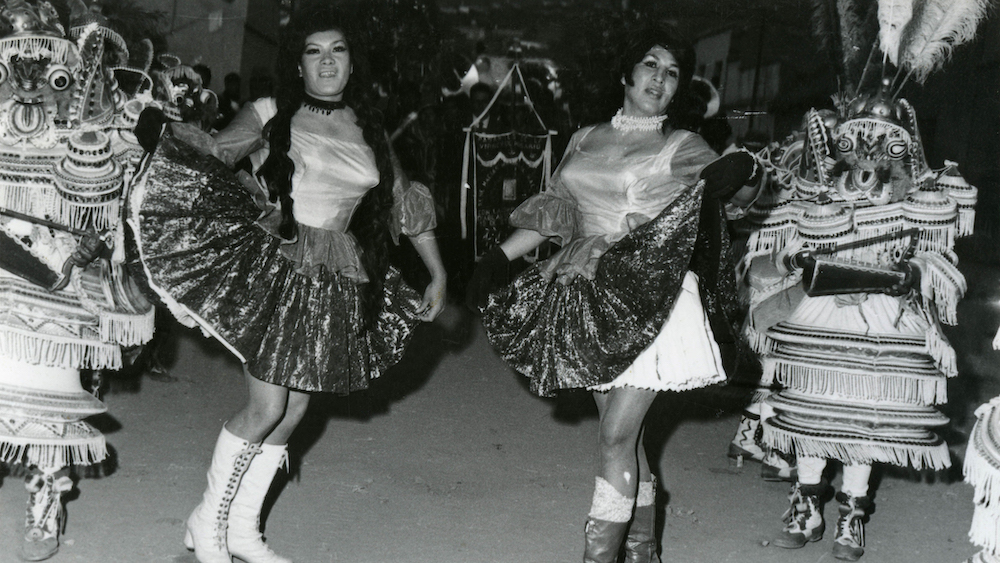‘A challenge to power’: Archival images of Bolivia’s queer carnival performers
Lucha. Luis Vela, a Rural Festival. 1973.
Source:
La China Morena Candy Vizcarra with three bears at the Festival of the Virgin of Urkupiña, Quillacollo, Cochabamba, Bolivia, c. 1972. Courtesy of Diversidad—Comunidad de Investigación Acción en Derechos y Ciudadanía (CIADEC) and David Aruquipa Pérez.
Source:La China Morena Candy Vizcarra at the festival of the district of San Antonia, La Paz, Bolivia, c. 1973. Courtesy of Diversidad—Comunidad de Investigación Acción en Derechos y Ciudadanía (CIADEC) and David Aruquipa Pérez.
Source:Ofelia (Carlos Espinoza) and Liz (Franz Hidalgo) at the rural festival of Huanuni, Oruro, Bolivia, 1976. Courtesy of Diversidad—Comunidad de Investigación Acción en Derechos y Ciudadanía (CIADEC) and David Aruquipa Pérez.
Source:Ofelia (Carlos Espinoza) at a private party with morenos and devils after the Carnival of Oruro, Bolivia, c. 1971. Courtesy of Diversidad—Comunidad de Investigación Acción en Derechos y Ciudadanía (CIADEC) and David Aruquipa Pérez.
Source:© 2022 - 1854 MEDIA LTD